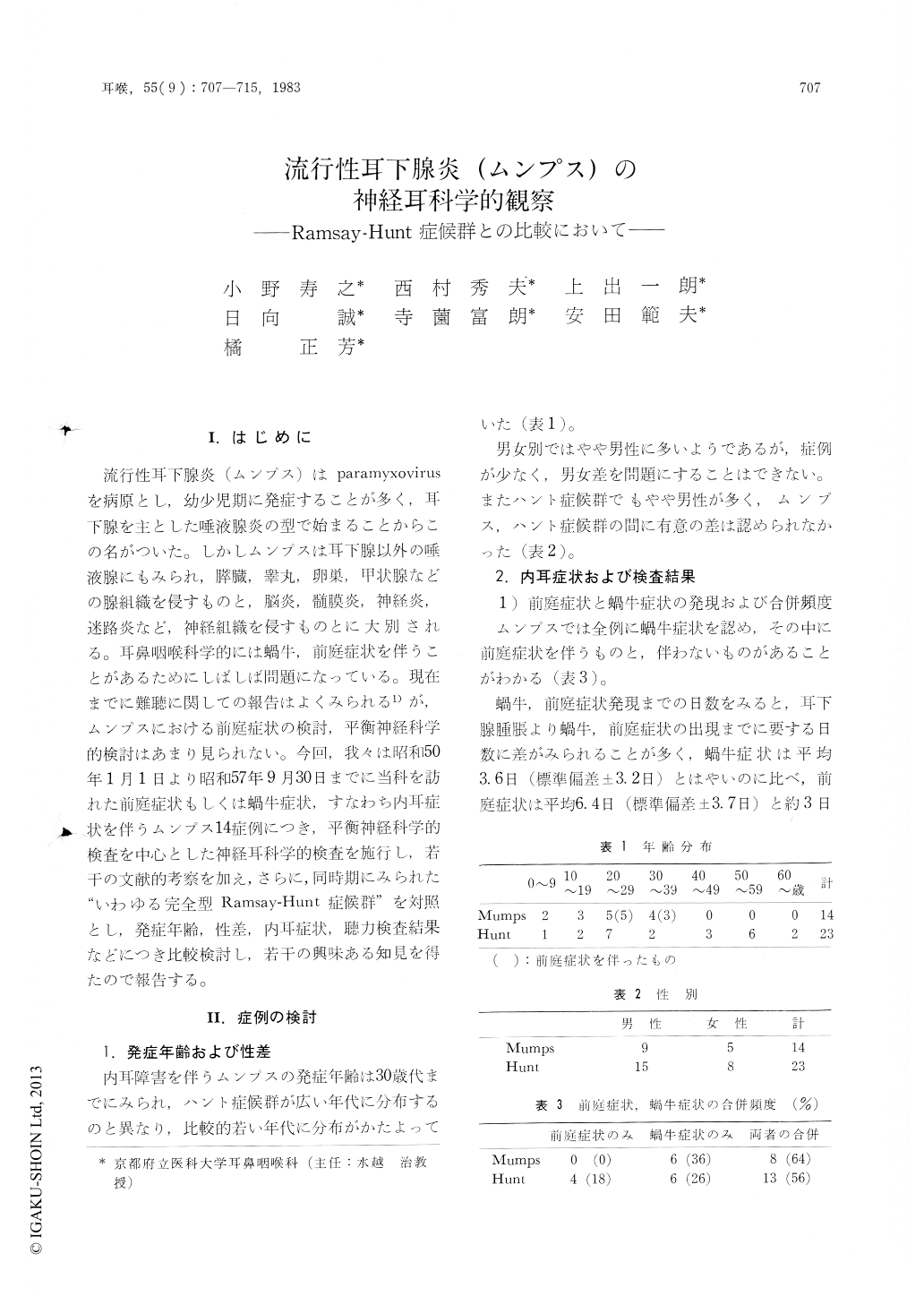Japanese
English
- 有料閲覧
- Abstract 文献概要
- 1ページ目 Look Inside
I.はじめに
流行性耳下腺炎(ムンプス)はparamyxovirusを病原とし,幼少児期に発症することが多く,耳下腺を主とした唾液腺炎の型で始まることからこの名がついた。しかしムンプスは耳下腺以外の唾液腺にもみられ,膵臓,睾丸,卵巣,甲状腺などの腺組織を侵すものと,脳炎,髄膜炎,神経炎,迷路炎など,神経組織を侵すものとに大別される。耳鼻咽喉科学的には蝸牛,前庭症状を伴うことがあるためにしばしば問題になっている。現在までに難聴に関しての報告はよくみられる1)が,ムンプスにおける前庭症状の検討,平衡神経科学的検討はあまり見られない。今回,我々は昭和50年1月1日より昭和57年9月30日までに当科を訪れた前庭症状もしくは蝸牛症状,すなわち内耳症状を伴うムンプス14症例につき,平衡神経科学的検査を中心とした神神耳科学的検査を施行し,若干の文献的考察を加え,さらに,同時期にみられた"いわゆる完全型Ramsay-Hunt症候群"を対照とし,発症年齢,性差,内耳症状,聴力検査結果などにつき比較検討し,若干の興味ある知見を得たので報告する。
Fourteen cases of mumps with inner ear symptoms in a period of 7 years and 10 months were studied by otoneurological examination. All of them had unilateral severe sensorineural hearing loss, and 8 of them complained of vestibular symptoms.The vestibular symptoms were more frequently seen in the older patients than in the younger. The inner ear symptoms appeared within 10 days after the onset of illness and the deafness continued for a long period of time, but the vestibular symptoms disappeared in most of cases. The vestibular examinations were performed in the 8 cases, and all had canal paresis. The vestibular lesions located mainly in the peripheral vestibular apparatus, but in one case the lesion was considered being in the brain stem.

Copyright © 1983, Igaku-Shoin Ltd. All rights reserved.


